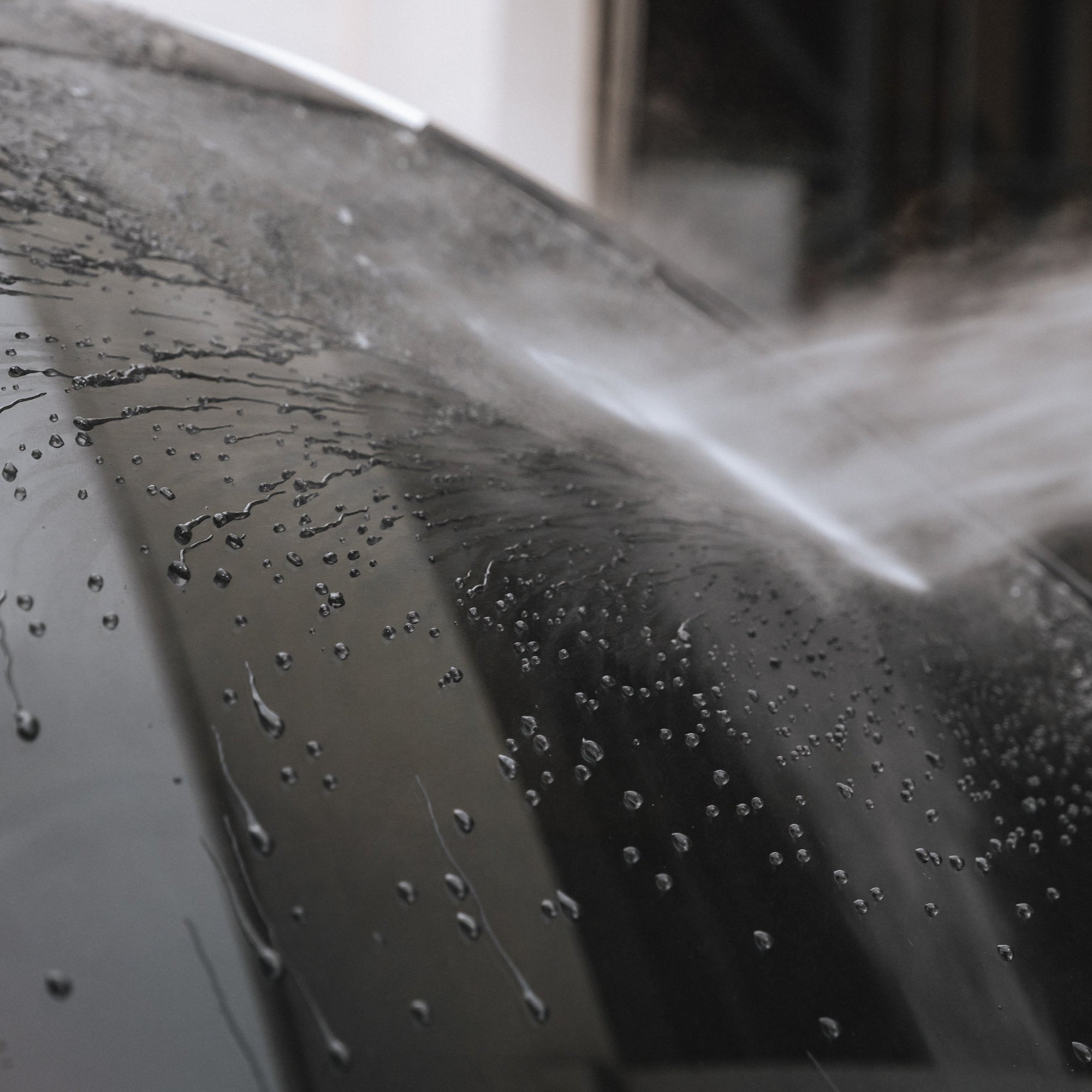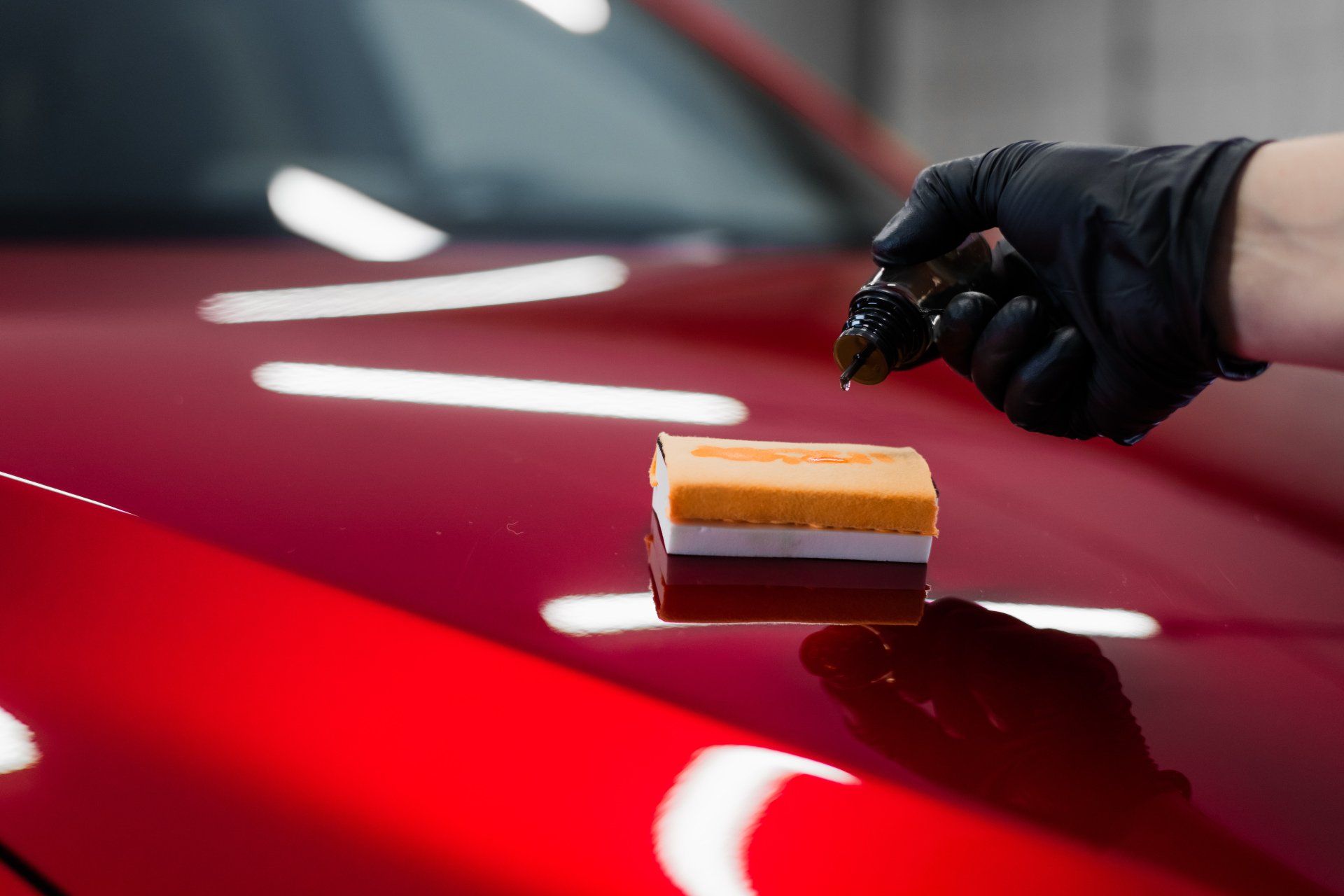The Value of Ceramic Coating: Protecting Your Car's Outside With Accuracy
In an age where maintaining the visual and useful stability of your lorry is critical, ceramic finish arises as a pivotal service. This protective layer not just defend against ecological hardships but additionally boosts the visual allure of your auto. With its special bonding residential properties, ceramic covering offers a degree of protection that much surpasses standard waxing methods. Yet, just how precisely does it attain such amazing outcomes? As we discover the nuances of its application and contrast it to various other choices, one can not question yet help regarding the specifics that make this technology crucial for contemporary vehicle treatment.
Benefits of Ceramic Coating
When it comes to preserving an automobile's aesthetic appeal, ceramic covering offers substantial benefits. By developing a semi-permanent bond with the car's paint, ceramic finishings efficiently avoid oxidation and fading, guaranteeing that the automobile maintains a shiny, showroom-like surface for an extended duration.
Along with its protective qualities, ceramic coating supplies exceptional hydrophobic buildings, triggering water and other fluids to bead off easily. This function simplifies the cleansing procedure, as dirt and debris are much less most likely to stick to the surface, decreasing the frequency and initiative needed for maintenance. The coating's resistance to chemical discolorations from acidic contaminants like bird droppings and tree sap is one more significant benefit, lessening potential paint damage.
Ceramic coverings additionally enhance scratch resistance, offering a layer that can soak up minor abrasions and swirl marks. This quality is particularly helpful in maintaining an excellent surface area, decreasing the probability of noticeable imperfections and preserving the stability of the cars and truck's paintwork gradually.

Exactly How Ceramic Covering Works
Recognizing the technicians behind ceramic coating reveals its efficiency as a safety solution for vehicles. Ceramic finishings are basically fluid polymer applications that chemically bond with an automobile's manufacturing facility paint, developing a safety layer. This layer offers as an obstacle versus environmental pollutants such as dirt, gunk, and ultraviolet rays, which can degrade a vehicle's exterior gradually. The vital part in ceramic layer is silicon dioxide (SiO2), which stems from quartz crystals and is recognized for its exceptional hardness and toughness.
Application of ceramic covering includes a meticulous process. This shield enhances the vehicle's gloss and hydrophobic residential properties, helping with less complicated cleaning by triggering water and pollutants to bead and slide off effortlessly.
In addition, the coating's molecular framework supplies resistance to small scratches and chemical discolorations. Unlike waxes or sealants that sit on top of the paint, ceramic coverings incorporate with the surface, supplying resilient defense. This integration is fundamental to its effectiveness, making sure the automobile's surface stays beautiful for many years.
Comparing Ceramic Coating to Alternatives
In the world of auto protection, ceramic layer stands as a formidable option when compared to standard options such as sealants and waxes. While waxes supply a temporary lustrous surface, normally lasting just a few helpful site weeks to months, ceramic finishes give a longer-lasting solution, usually sustaining for several years. This durability is credited to the chemical bonding that takes place when ceramic coverings are applied, developing a strong layer that is resistant to ecological risks.
Contrastingly, sealants, although even more resistant than waxes, still fall short of the robust defense supplied by ceramic finishings. Sealers can normally last for approximately a year, giving an artificial shield against particular aspects. They do not have the exceptional hydrophobic properties and UV security that ceramic coatings supply.
Additionally, ceramic finishings offer improved scratch resistance, which neither waxes neither sealants can effectively match (ceramic coating). This is especially useful in maintaining a car's excellent look. Furthermore, ceramic layers streamline upkeep initiatives by decreasing the adherence of dust and crud, therefore helping with simpler cleaning. In summary, while typical waxes and sealants offer fundamental protection, ceramic layers provide a thorough, lasting solution that dramatically preserves the lorry and enhances's exterior finish.
Application Process Explained
Applying ceramic finish to a vehicle needs a careful procedure to guarantee optimum outcomes and longevity. As soon as cleaned up, the automobile is dried and brightened to get rid of any kind of blemishes, as any kind of existing swirls or scratches can come to be a lot more pronounced after the coating is used.
Following surface area preparation, the application of the ceramic coating begins. The layer is normally applied in a climate-controlled atmosphere to stop dust fragments from working out on the newly cleansed surface area. Making use of an applicator pad, the ceramic covering is applied in small sections to ensure even protection. It is vital to comply with the producer's standards relating to the appropriate treating time and application thickness.
After application, the finish requires a details treating duration, throughout which the automobile needs to be shielded from water and pollutants. This healing procedure can vary relying on the product however normally ranges from 24 to 48 hours. Inevitably, this comprehensive procedure is crucial in accomplishing a glossy and durable finish.
Maintenance Tips for Durability
To preserve the longevity of a ceramic covering, adherence to a self-displined maintenance regimen is necessary. Prevent automatic vehicle washes, as their harsh brushes can jeopardize the covering's stability.
Post-wash, drying out the car with a clean microfiber towel protects against water areas that his comment is here might deteriorate the layer with time. In addition, use a ceramic finishing booster every few months. These boosters strengthen the hydrophobic homes and enhance the finish's protective capabilities, ensuring it continues to be efficient against pollutants.
Bear in mind that auto parking areas play a crucial duty in upkeep. ceramic coating. Whenever feasible, park in shaded areas to reduce UV exposure, which can progressively weaken the layer. For lasting storage, think about making use of a cars and truck cover for added security versus environmental elements
Verdict
Finally, ceramic finish works as a crucial safety layer for vehicle outsides, using resilient protection versus ecological elements such as gunk, dirt, and uv rays. By developing a semi-permanent bond with the paint, it boosts aesthetic charm while maintaining the auto's worth. Its hydrophobic buildings assist in much easier upkeep, differentiating it from alternative safety methods. Recognizing the application process and sticking to maintenance recommendations are important for taking full advantage of the long life and performance of ceramic coating.
When it comes to maintaining a vehicle's aesthetic appeal, ceramic layer offers significant advantages. By creating a semi-permanent bond with the automobile's paint, ceramic finishings properly protect against oxidation and fading, making sure that the cars and truck maintains a glossy, showroom-like coating for a prolonged duration. Ceramic finishings are basically fluid polymer applications that chemically bond with a cars and truck's manufacturing facility paint, producing a protective layer. In summary, while standard waxes and sealants supply basic security, ceramic coverings present a detailed, why not try here lasting option that considerably enhances and maintains the car's outside surface.
